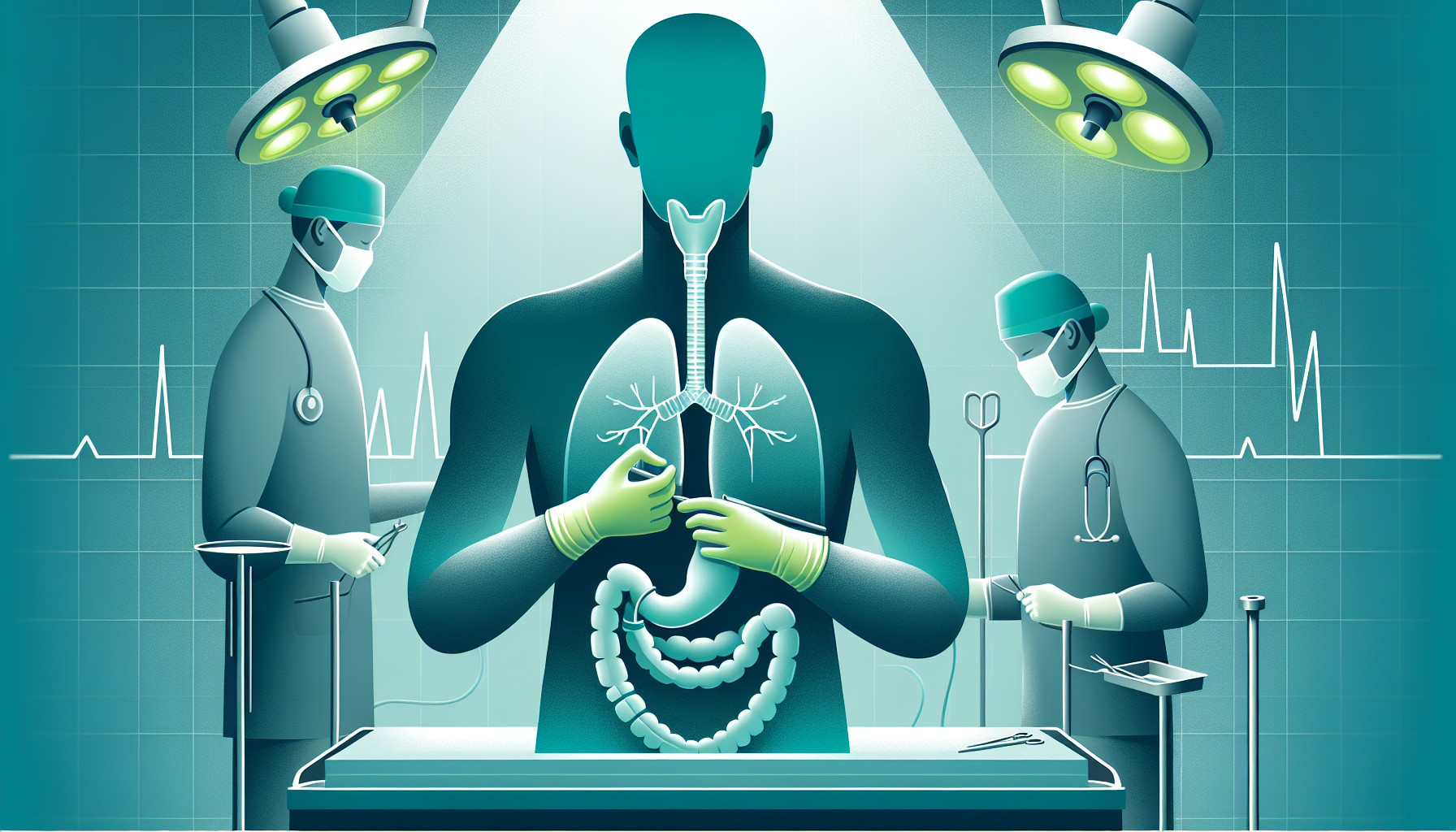Our Summary
This paper discusses the progress made in surgical procedures for esophageal diseases since 1913, especially focusing on minimally invasive esophagectomy (surgery to remove part or all of the esophagus). It talks about the three main approaches to this surgery: the Ivor Lewis technique, the McKeown technique, and the transhiatal approach. In the past, these procedures had high risks and often led to serious complications or death. However, with recent medical advancements, these surgeries have become much safer and more effective. This paper reviews different methods for performing minimally invasive esophagectomy, including robot-assisted surgeries. It also discusses the history of these techniques, their variations, and the results after these procedures.
FAQs
- What are the three main approaches to esophagectomy mentioned in the article?
- How have recent medical advancements improved the safety and effectiveness of esophagectomy?
- What are some methods for performing minimally invasive esophagectomy as discussed in the paper?
Doctor’s Tip
One helpful tip a doctor might tell a patient about esophagectomy is to follow a strict post-operative diet plan to ensure proper healing and minimize complications. This may include starting with clear liquids and gradually progressing to soft foods as tolerated. It is important to avoid foods that may irritate the surgical site, such as spicy or acidic foods, and to eat slowly and chew thoroughly to prevent discomfort. Additionally, staying hydrated and taking any prescribed medications as directed can help promote a smooth recovery after surgery.
Suitable For
Patients who are typically recommended for esophagectomy include those with:
Esophageal cancer: Esophagectomy is often recommended as a treatment for early-stage esophageal cancer. It may also be considered for advanced-stage cancer in some cases.
Barrett’s esophagus: This condition, which is a precursor to esophageal cancer, may require esophagectomy in some cases.
Severe gastroesophageal reflux disease (GERD): Esophagectomy may be recommended for patients with severe GERD that does not respond to other treatments.
Achalasia: Esophagectomy may be considered for patients with severe achalasia, a condition that affects the ability of the esophagus to move food into the stomach.
Benign tumors or strictures: Esophagectomy may be recommended for patients with benign tumors or strictures that are causing symptoms or complications.
It is important to note that esophagectomy is a major surgery with potential risks and complications, so the decision to undergo this procedure should be carefully considered and discussed with a medical professional.
Timeline
Before esophagectomy:
- Patient is diagnosed with esophageal cancer or other diseases that require removal of part or all of the esophagus.
- Patient undergoes preoperative tests and evaluations to assess their overall health and determine the best surgical approach.
- Patient may need to undergo chemotherapy or radiation therapy before surgery to shrink the tumor and reduce the risk of complications.
- Patient undergoes the esophagectomy procedure, which can be performed using open surgery or minimally invasive techniques.
- Recovery period in the hospital, which can last several days to weeks, depending on the complexity of the surgery and the patient’s overall health.
After esophagectomy:
- Patient may experience pain, difficulty swallowing, and other side effects immediately after surgery, which can be managed with medication and rehabilitation.
- Patient undergoes a period of recovery and rehabilitation to regain strength, mobility, and the ability to eat and drink normally.
- Patient may need to make dietary and lifestyle changes to accommodate the changes in their digestive system and prevent complications.
- Patient undergoes follow-up tests and evaluations to monitor their progress and check for any signs of recurrence or complications.
- Patient may need ongoing medical care and support to manage long-term effects of the surgery and maintain their overall health and well-being.
What to Ask Your Doctor
What are the potential risks and complications associated with esophagectomy?
What is the success rate of minimally invasive esophagectomy compared to traditional open surgery?
How long is the recovery period after esophagectomy and what can I expect during the recovery process?
Will I need any additional treatments or therapies after the surgery?
What lifestyle changes will I need to make after esophagectomy to ensure a successful outcome?
How will esophagectomy affect my ability to eat and swallow?
What follow-up appointments or tests will be necessary after the surgery?
Are there any long-term side effects or complications I should be aware of?
Can you provide me with information on your experience and success rates with esophagectomy procedures?
Are there any alternative treatments or procedures that may be considered instead of esophagectomy?
Reference
Authors: Murthy RA, Clarke NS, Kernstine KH Sr. Journal: Innovations (Phila). 2018 Nov/Dec;13(6):391-403. doi: 10.1097/IMI.0000000000000572. PMID: 30543576
